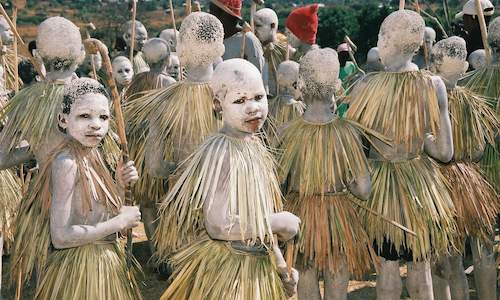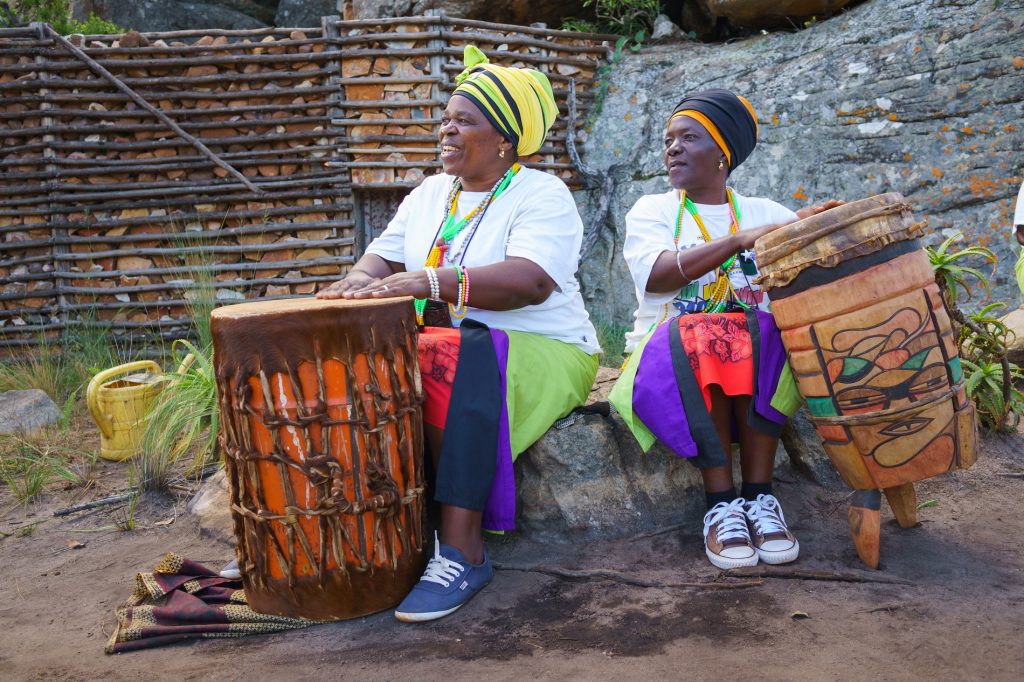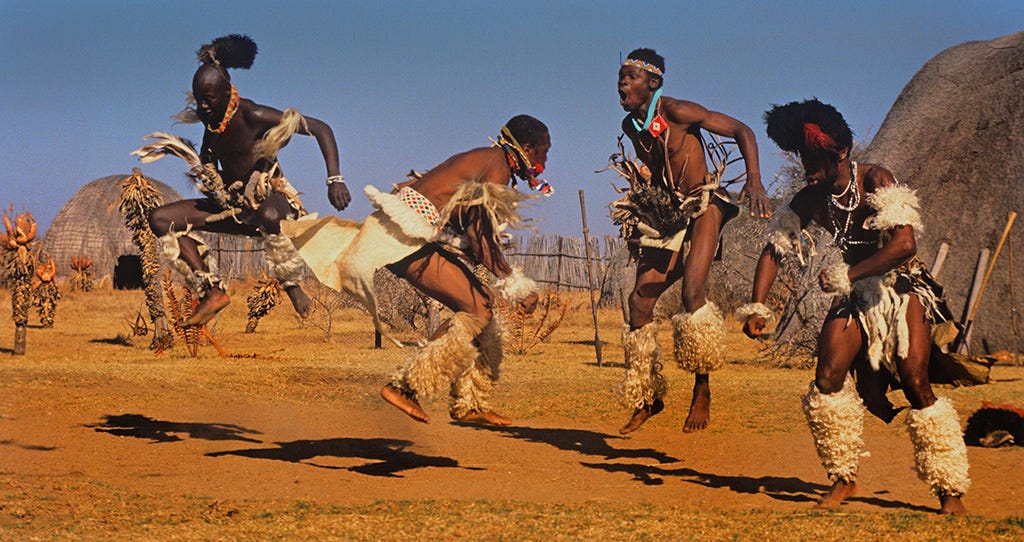South African Culture Today Things To Know Before You Buy
South African Culture Today Things To Know Before You Buy
Blog Article
Not known Factual Statements About South African Culture Today
Table of ContentsAbout South African Culture TodayHow South African Culture Today can Save You Time, Stress, and Money.Not known Details About South African Culture Today Everything about South African Culture TodaySome Ideas on South African Culture Today You Should KnowSouth African Culture Today Fundamentals Explained
A matter of value in Zambian towns is the passing away of enjoyed ones. All members of the town placed cash, time and effort together for the interment of the deceased.Music and dance is a very essential facet of the Zambian culture. The various tribal devices have their own dance types; nevertheless, makishi is common amongst all tribes.
The Buzz on South African Culture Today
When it concerns music, drums are used one of the most, with a selection of drumming events. In Zambia, bulk of individuals are Christian; Protestant and Roman Catholic. There are little groups of Muslims and Hindus, with the rest following local native tribal ideas.

South African heritage and society is exceptionally diverse, and contains several different teams of people that each have their own customs and ideas. Having such a variety of individuals and cultures is what makes South Africa so distinct. In the true feeling of the phrase, we are a rainbow nation.
South Africa has approximately 3 hundred thousand Portuguese people residing in it. Making it the 7th on the listing of countries with one of the most Portuguese people in it outside of Portugal. Portuguese is not only a culture, however it is likewise a language and a race. Portuguese people stem from the country of Portugal in Europe, nevertheless, due to Portugal (like several other nations in Europe) discovering the world and overcoming other nations during the 15th 20th centuries, South Africa has what we call Portuguese South African's living in it.
9 Simple Techniques For South African Culture Today
Amongst the famous attributes of the topography is a plateau that covers practically two thirds of the center of the country. The plateau complex rises toward the southeast, where it climaxes in the Drakensberg range, component of an escarpment that divides the plateau from the seaside areas. The Drakensburg includes Sparkling wine Castle, the highest possible peak in the nation.
The area north of the Witwatersrand, called the bushveld, slopes downward from east to west towards the Limpopo River, which creates the international boundary. The western area of the plateau, the middleveld, also comes down in the direction of the west and varies in elevation between the highveld and bushveld. Between the Drakensburg and the eastern and southern shoreline, the land comes down to the sea.
Nearer the shore there is a low-lying plain called the eastern lowveld. Southwest of the plateau the country comes to be progressively a lot more arid, paving the way to the stony desert of the Great Karroo, approached the eastern by the reduced, much better watered plateau of the Little Karroo. Dividing the dry southern interior from the sandy coastal of the southern coast and West Cape is another variety, the Langeberg.
South African Culture Today Can Be Fun For Everyone
The nation's racially, ethnically, and politically split background has created nationwide and subnational signs that still work as icons of the country, and others signs next that are approved just by certain teams. The monoliths to white settler conquest and political dominance, such as the Afrikaner Voortrekker ("leader") Monolith in Pretoria and the Rhodes Monument honoring the British colonial empire home builder and Cape prime minister Cecil Rhodes, continue to be sectarian symbols.
The first modern residents were the San ("bushman") hunter-gatherers and the Khoi ("Hottentot") peoples, who rounded up livestock (South African culture today). The San might have existed for hundreds of years and left proof of their existence in countless click now ancient cavern paintings ("rock art"). Bantu-speaking clans that were the forefathers of the Nguni (today's amaZulu, amaXhosa, amaSwazi, and vaTsonga peoples) and Tswana-Sotho language groups (today's Batswana and Southern and Northern Basotho) migrated below east Africa as early as the fifteenth century

The two previous republics of the Orange Free State and Transvaal (South African Republic) were established by Afrikaner settlers who defeated and dispossessed the Basotho and Batswana. Lesotho would certainly have been by force integrated right into the Orange Free State without the extension of British security in 1869. The best marriage of the country resulted from the South African War (18991902) in between the British and both Afrikaner republics, which lowered the country to spoil at the beginning of the twentieth century.
Afrikaners historically considered themselves the only true South Africans and, while providing complete citizenship to all locals of European descent, denied that status to individuals of color until the autonomous shift of 1994. British South Africans maintain a feeling of social and social connection to Great Britain without damaging their identification as South Africans.
South African Culture Today Things To Know Before You Get This
The variety and fragmentation within ethnic groups and the balance of stress between those groups throughout the twentieth century stopped interethnic civil problem. While intergroup stress over resources, privileges, and political prominence remain, those problems are as likely to pit Zulu versus Zulu as Zulu versus Xhosa or African against Afrikaner.
From colonial India, British sellers and managers brought the bent metal decorative roof coverings and slender lace job pillars that still represent the verandas of homes in towns and cities throughout the nation. Residences of prayer add an essential building facet also in weblink the tiniest towns. In addition to the soaring steeples and classic stonework of Afrikaans Dutch Reformed churches, Anglican churches, synagogues, mosques, and Hindu shrines offer variety to the spiritual architectural scene.

Butchering and the brewing of typical cereal beer are essential in protecting the involvement and a good reputation of the forefathers that are considered the guardians of good luck, success, and health. Indian areas maintain their native cooking practices and apply them on Islamic and Hindu routine and ceremonial events. Afrikaners and Coloured people gather at weekends and special occasions at multifamily barbeques called braais, where neighborhood bonds are reinforced.
Due to the fact that this was the primary economic enterprise of both black Africans and white colonists, conflict between those groups focused on the possession of grazing land and animals. In 1867, the largest ruby deposits on the planet were discovered at Kimberley in the west main location. The wide range from those areas aided fund the exploitation of the best gold coral reef on the planet, which was discovered on the Witwatersrand in 1886.
What Does South African Culture Today Do?
This brought about misconceptions and deliberate misstatement in the negotiations of white settlers and government officials with African principals throughout the colonial period (South African culture today). In the establishment of African books, some aspects of public and chiefly "tribal depend on" land period were maintained, and even in white backwoods, forms of public tenure were still exercised in locations with African neighborhoods
After the autonomous improvement of 1994, programs for land restitution, redistribution, and reform were set up, however progression has been slow-moving. The white minority still regulates eighty percent of the land. Following agricultural land intrusions in Zimbabwe, the Division of Land Matters has actually vowed to speed up land redistribution.
Report this page